

Pont-Aven, city of painters and Breton setting
Nestled on the banks of the Aven River, Pont-Aven captivates with its picturesque charm, mills, and marina. Home to the Pont-Aven School, the town inspired Gauguin and numerous other artists, making it a world-renowned art destination. Galleries, riverside strolls, and gourmet specialties punctuate a visit to this Breton village, where artistic history and natural beauty meet.
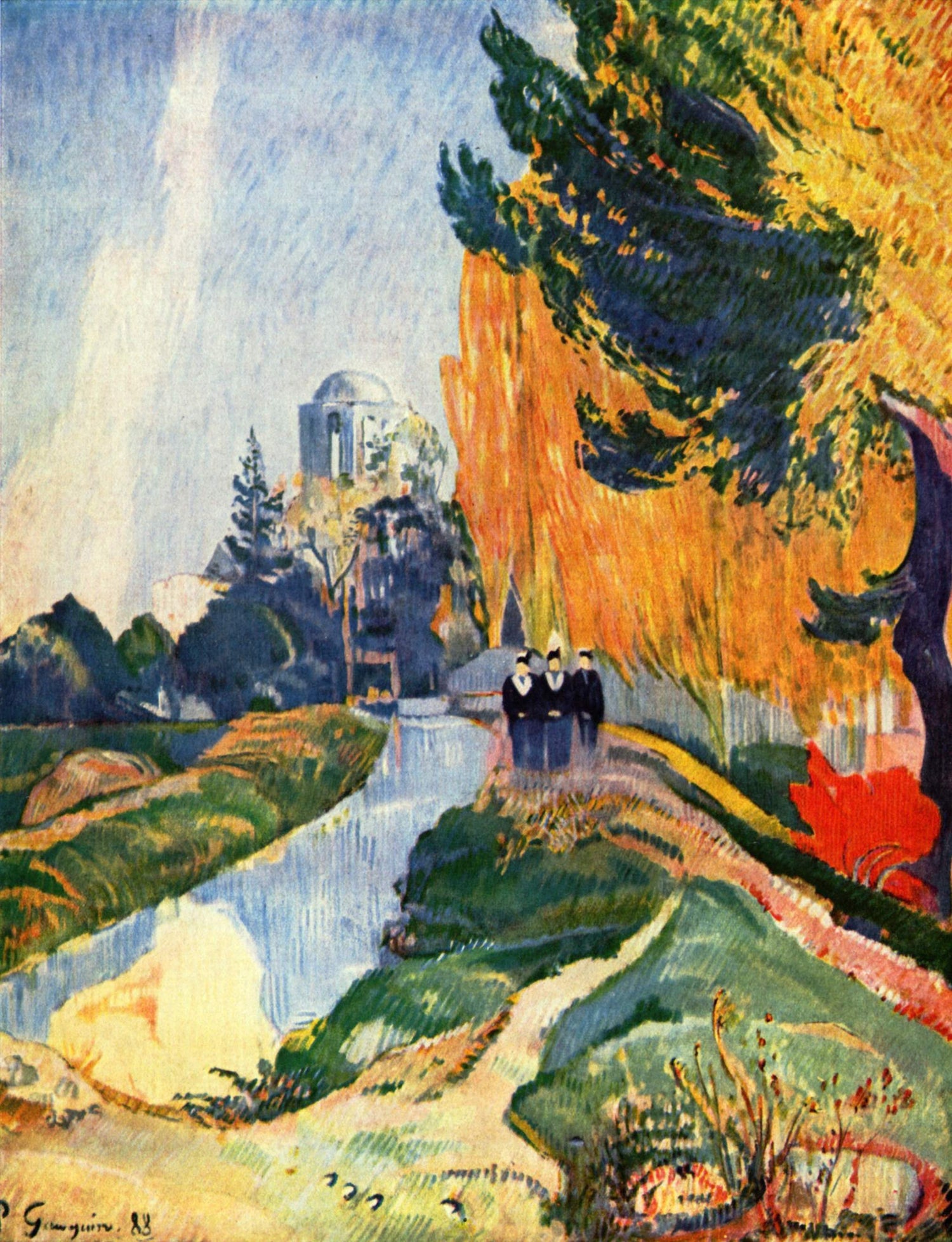
Gauguin and Synthesim
City of Painters
A city of painters, Pont-Aven is world famous for having welcomed Paul Gauguin and many artists in search of artistic renewal at the end of the 19th century.
This small Breton village then became the cradle of the Pont-Aven School, a major movement that revolutionized modern art by advocating synthetism: simplification of forms, bright, flat colors, and rejection of traditional perspective.
Around Gauguin, Émile Bernard, Paul Sérusier and others created a new pictorial freedom, inspiring subsequent generations and marking the history of art.
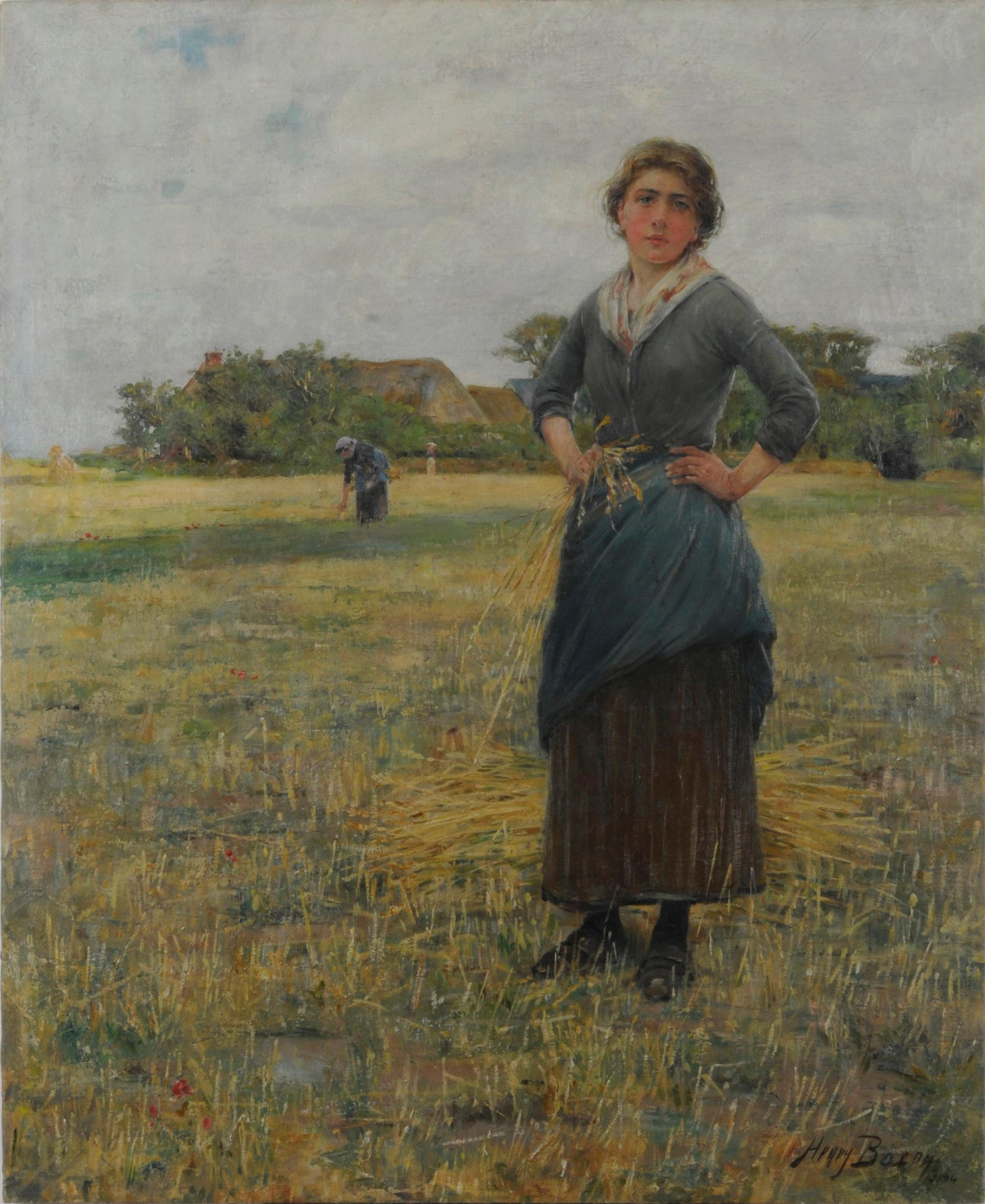
International
Artists inspired by Pont Aven
The most famous artists inspired by Pont-Aven are Paul Gauguin, Émile Bernard, Paul Sérusier, Charles Filiger, Maxime Maufra, Henry Moret, Ernest de Chamaillard and Louis Roy.
Before them, the American painter Henry Bacon was the first to discover Pont-Aven in 1864, followed by Robert Wylie, who helped popularize the town among other American artists.
Pont-Aven also attracted an international colony of artists from France, England, the Nordic countries and the United States, including Impressionists, Nabis and Post-Impressionist painters.
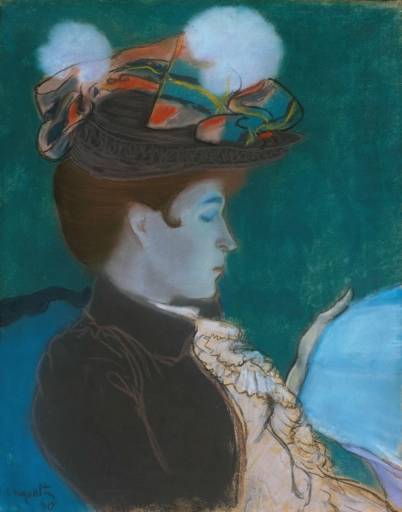
Artistic movement
The influence of Pont Aven
Synthetism : Born around Paul Gauguin and Émile Bernard in Pont-Aven, this movement advocates flat areas of bright colors, the simplification of forms and the elimination of details, breaking with the illusionist tradition.
Cloisonnism : Developed by Louis Anquetin and adopted by the artists of Pont-Aven, it consists of separating areas of color with marked contours, reminiscent of medieval stained glass or Japanese prints.
Symbolism : The Pont-Aven style, with its search for poetic and sacred meaning, contributed to the rise of symbolism in late 19th-century painting.
Post-Impressionism : Several artists from Pont-Aven, such as Maxime Maufra, practiced a post-impressionism influenced by the research of Gauguin and his peers.
The Nabis : This avant-garde group, of which Paul Sérusier was a direct link, drew its inspiration from the aesthetic innovations of Pont-Aven, notably in the use of color and stylized forms.
Pont-Aven was thus a hotbed of experimentation which left a lasting mark on the history of modern art .
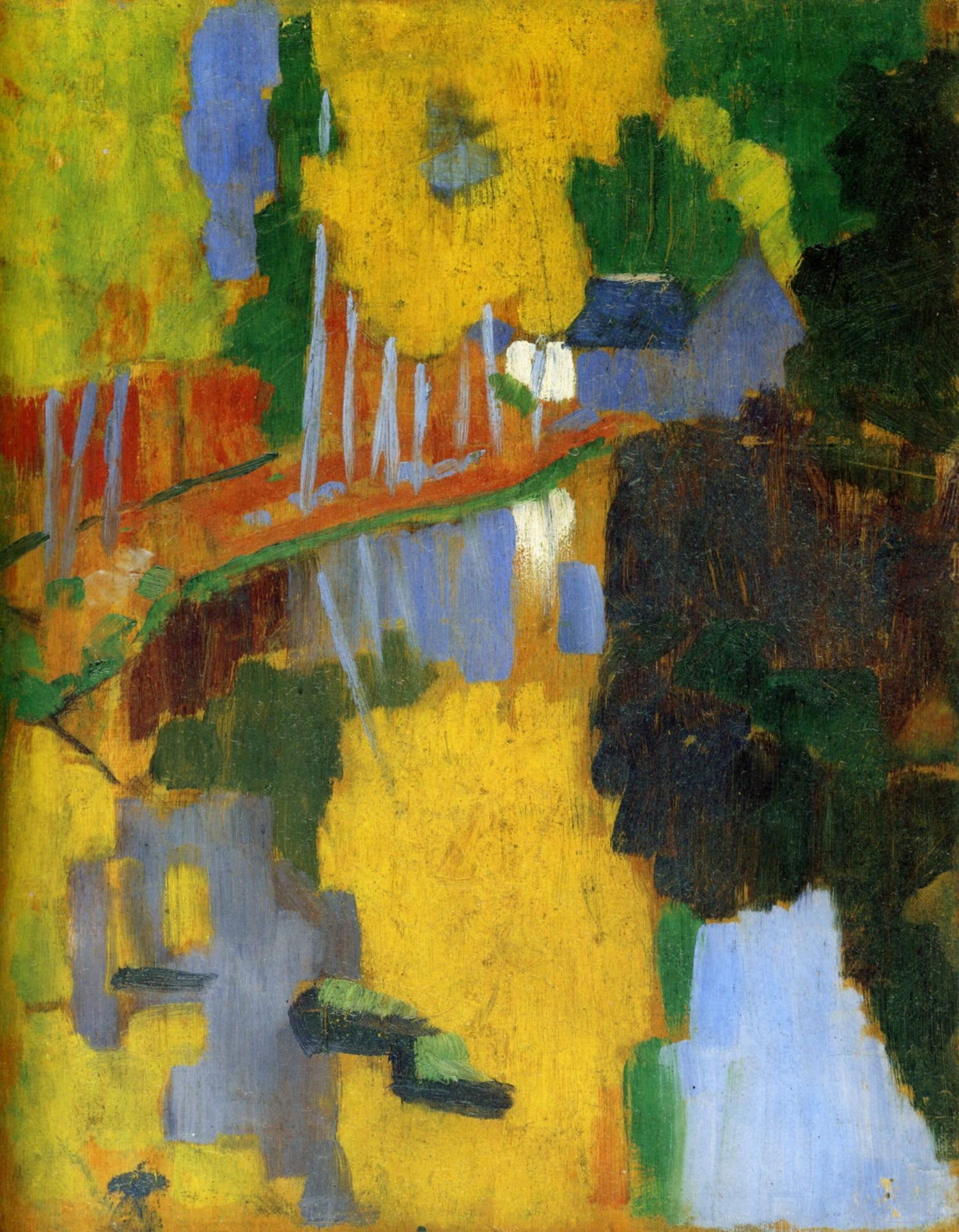
Founded in Pont Aven
The Nabi movement
Pont-Aven played a decisive role in the birth and evolution of the Nabi movement. It was during a stay in Pont-Aven in 1888 that Paul Sérusier, under the direction of Paul Gauguin, created The Talisman, a seminal work that marked a break with academic painting and inspired the formation of the Nabis group in Paris.
Gauguin encouraged Sérusier to use pure colors, simplify forms, and emphasize personal expression, principles that became central to the Nabi aesthetic.
Back in Paris, Sérusier shared this new approach with his comrades at the Académie Julian, including Maurice Denis, Pierre Bonnard and Édouard Vuillard, thus laying the foundations of the group.
Pont-Aven was therefore the place of the artistic and theoretical revelation at the origin of the Nabi movement : the town and Gauguin's teaching there allowed the Nabis to affirm their quest for spirituality, their taste for color, decorative simplification and symbolism, which would have a lasting influence on modern art.
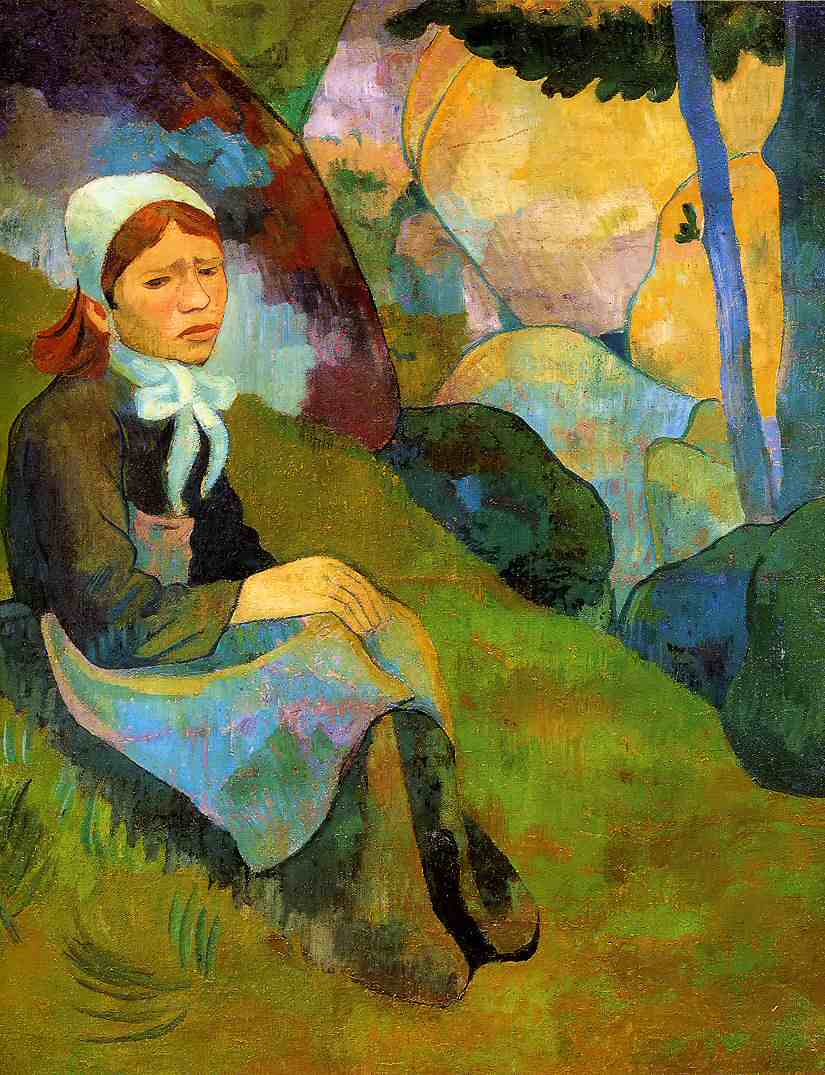
influence on modern art
The Pont Aven school
The Pont-Aven School is a pictorial movement born at the end of the 19th century in the Breton village of Pont-Aven.
It brought together artists from all over Europe, including Paul Gauguin, Émile Bernard, Paul Sérusier and Charles Filiger, who sought to break with academicism and invent new artistic languages.
Their style, called synthetism, is characterized by the simplification of forms, the use of bold colors applied in flat tints, the abolition of traditional perspective and marked contours, often inspired by Japanese prints.
The painting is no longer a simple imitation of reality but becomes an expressive surface, carrying emotions and ideas.
The Pont-Aven School had a profound influence on modern art, paving the way for movements such as Symbolism, Fauvism, the Nabis and even Abstraction.
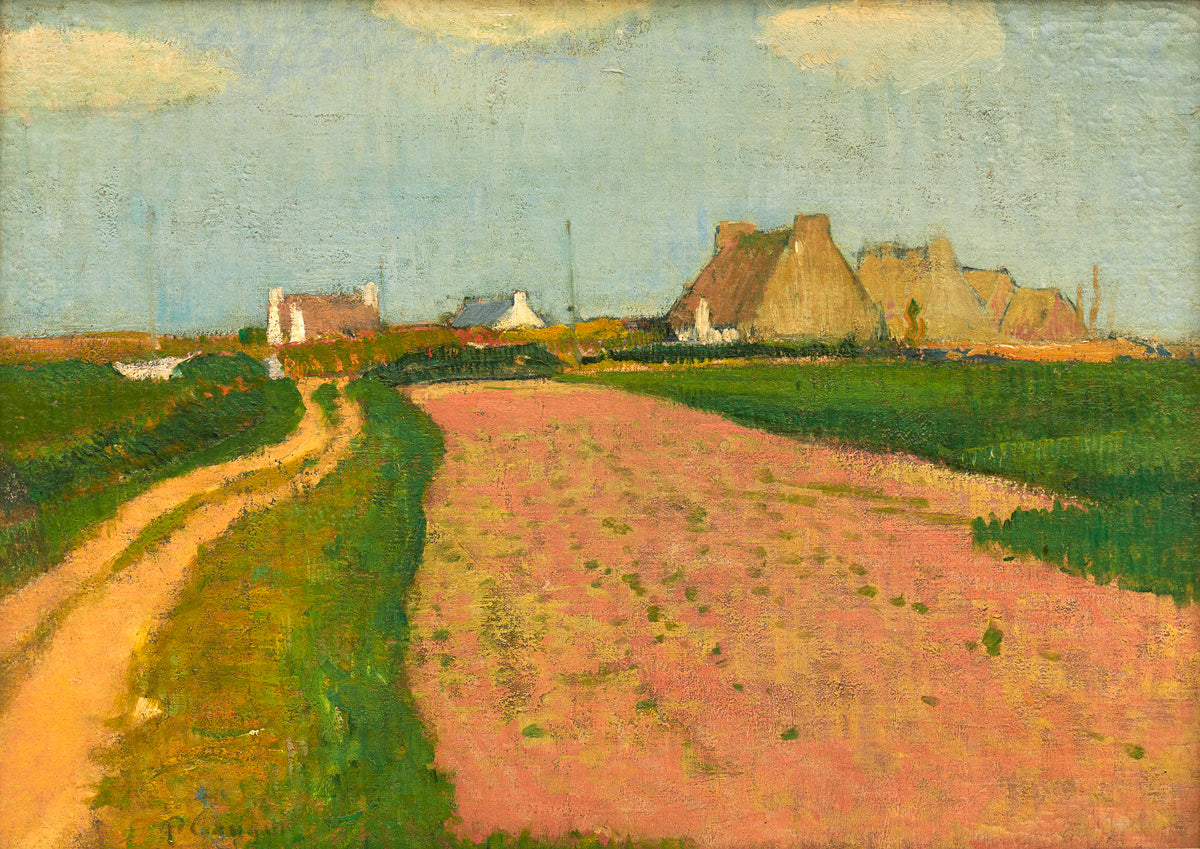
Pont Aven School
Favorite themes
The artists of the Pont-Aven School addressed several major themes in their works:
Breton landscapes : Rural landscapes, the banks of the Aven, the rocky coast and Breton nature are central subjects, often treated in a stylized and colorful way.
Daily life and rural scenes : The inhabitants of Brittany, their customs, festivals, pardons and traditional costumes are frequently represented, demonstrating an interest in local life and its authenticity.
Spirituality and Religion : Religious and mystical themes are present, with works inspired by faith, legends, and Christian symbolism.
Quest for elsewhere and exoticism : The artists express their fascination for the exoticism of Brittany, perceived as a mysterious and inspiring land, and also explore the influence of Japonism in their compositions.
Simplification and symbolism : Beyond figurative subjects, artists seek to express ideas and emotions through the simplification of forms, the use of bold colors and the development of synthetic and symbolic compositions.
These themes reflect both the attachment to Brittany and the desire to renew the pictorial language of their time.
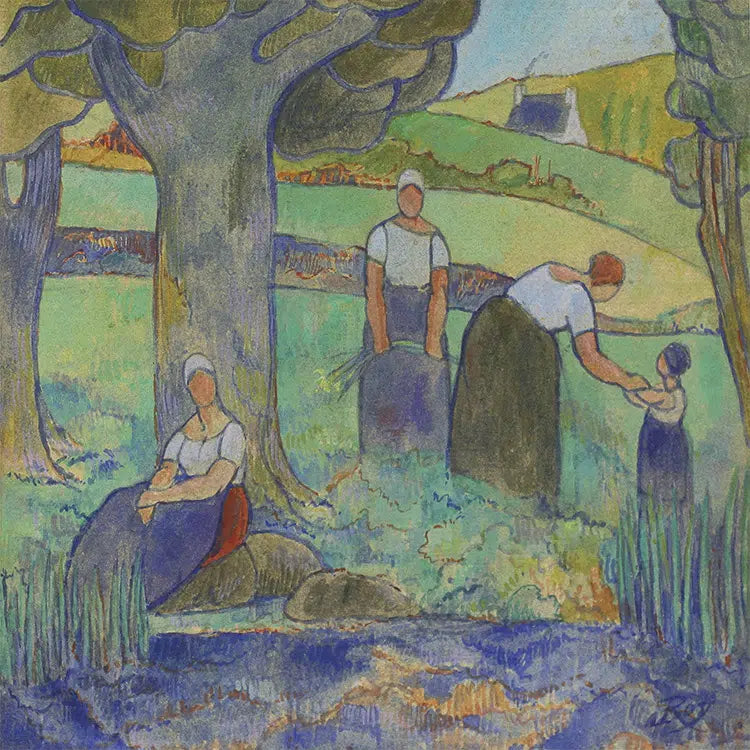
Pont Aven School
The influence of Japanese prints
Japanese prints, particularly ukiyo-e, had a profound influence on the style of Pont-Aven artists in the late 19th century. This influence is mainly manifested in:
Simplification of forms : Pont-Aven artists, such as Gauguin and Émile Bernard, adopted the tendency of Japanese prints to stylize and purify forms, favoring the essential to the detriment of detail.
Flat colors : Inspired by Japanese technique, they use large areas of clear, uniform colors, without modeling, which give their works a new graphic force.
Marked contours (cloisonnism) : The artists outline the shapes with dark lines, in the manner of Japanese woodcuts, creating a decorative and synthetic effect that has become characteristic of the Pont-Aven School.
Asymmetrical composition and original framing : Japanese prints often feature off-center compositions and unusual viewpoints, which the Pont-Aven painters incorporated to energize and modernize their own works.
Thematic inspiration : In addition to the technique, certain motifs such as stylized landscapes, trees, or the representation of nature are taken up and adapted by the artists of Pont-Aven in their paintings.
Thus, Japanese art allowed the painters of Pont-Aven to renew their visual language, to free themselves from academic conventions and to lay the foundations of modern art in Europe.
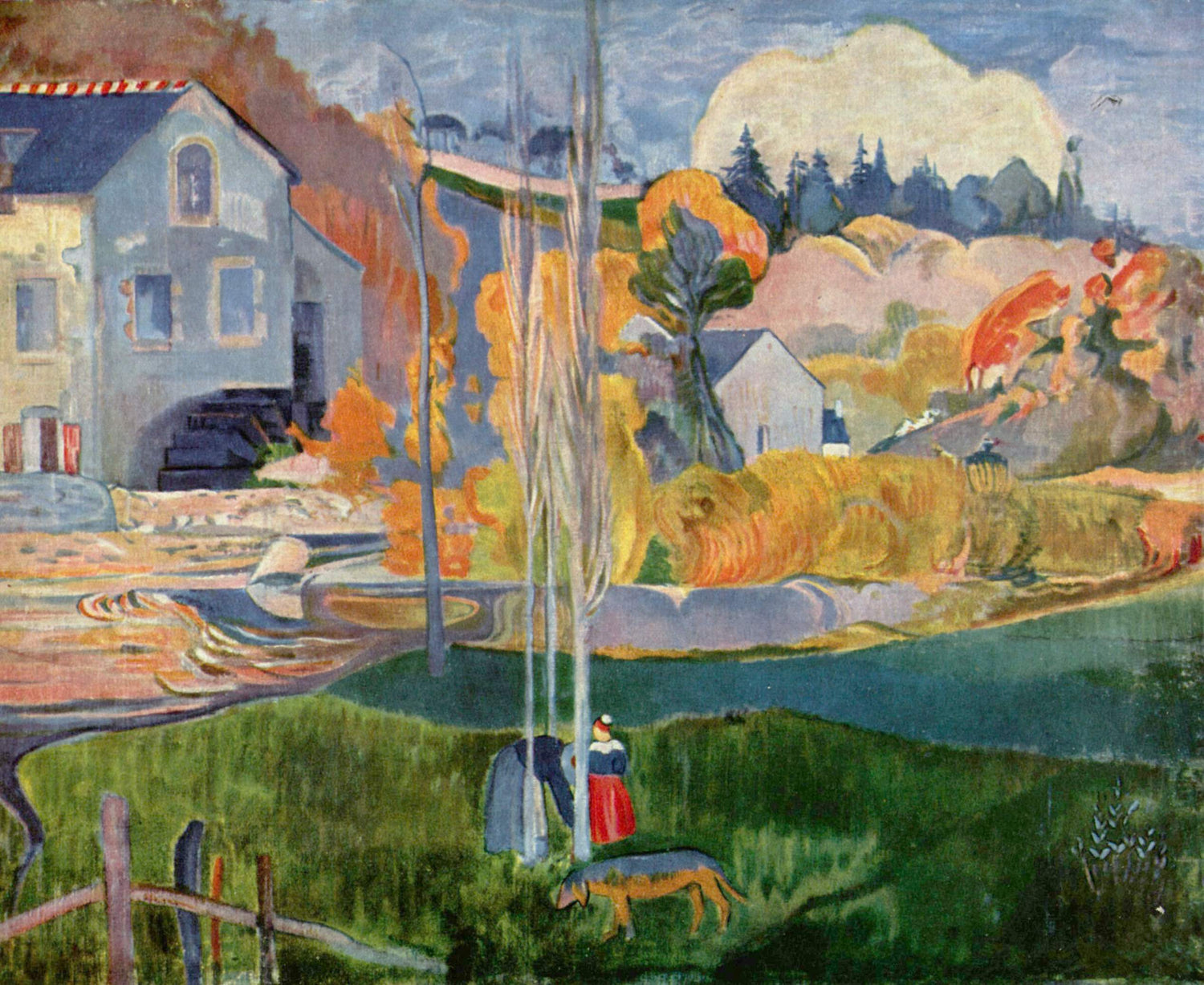
modern art
the influence of the Pont Aven school
The artists of Pont-Aven abolished several fundamental elements of traditional Western painting:
Classical perspective : They removed realistic depth and perspective effects in favor of flat compositions, where planes are partitioned and juxtaposed without the illusion of volume.
Modeling and shadows : The effects of light and shadow, used to give relief, are abandoned in favor of flat areas of bright and uniform colors.
Realistic detail : Artists simplify and stylize forms, eliminating superfluous details to get to the essential, influenced by Synthetism and Cloisonnism.
Mimetic representation : They reject the faithful imitation of reality in favor of a subjective, symbolic or decorative vision of the subject.
Priority to the subject : The painting is no longer just a story or a scene to illustrate: it becomes a flat surface where the assembly of colors and shapes takes precedence over the anecdote, according to the famous formula of Maurice Denis.
These ruptures allowed the artists of Pont-Aven to open the way to modern art, moving from an aesthetic of representation to an aesthetic of the imagination and formal synthesis.
The Gauguin Museum in Pouldu traces the entire history of art in Brittany.
